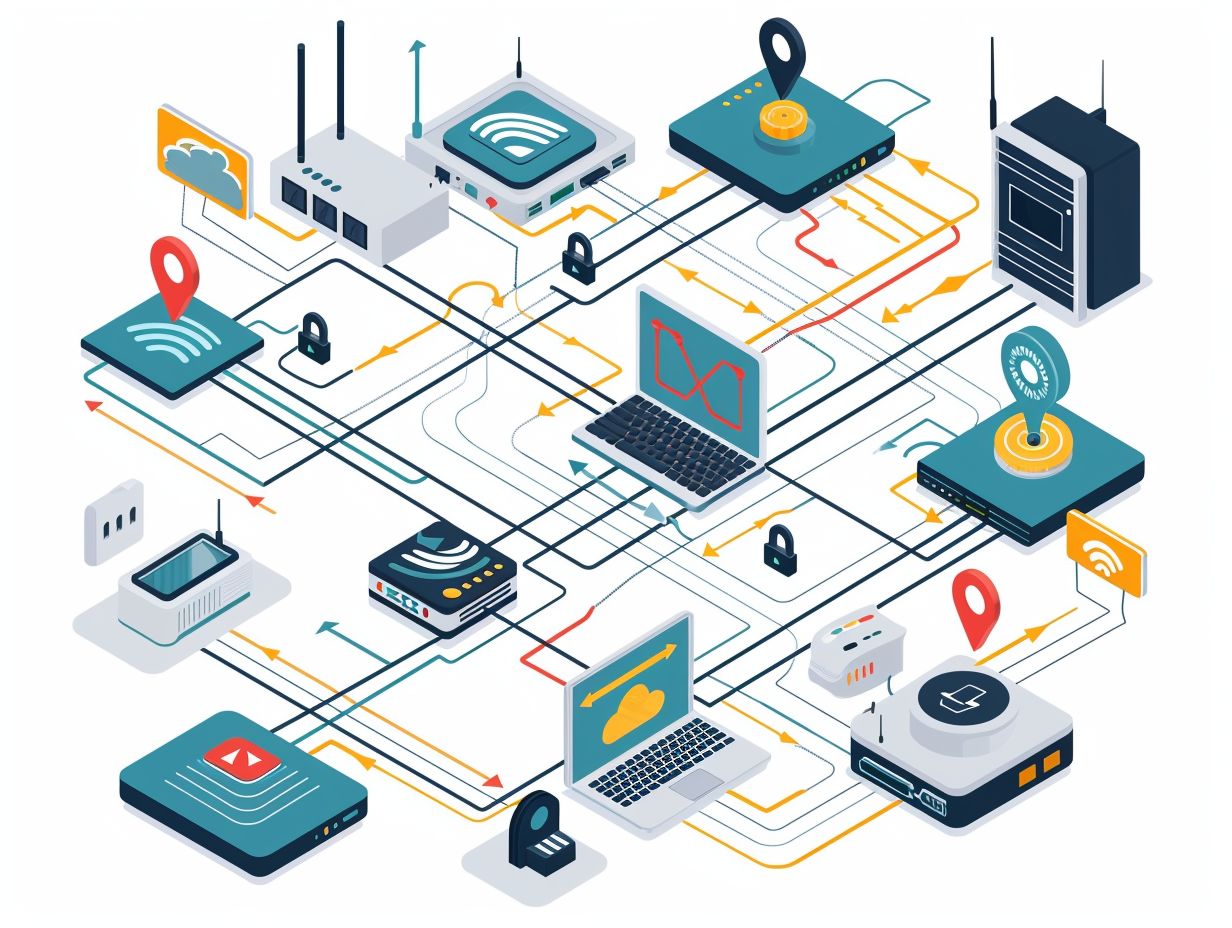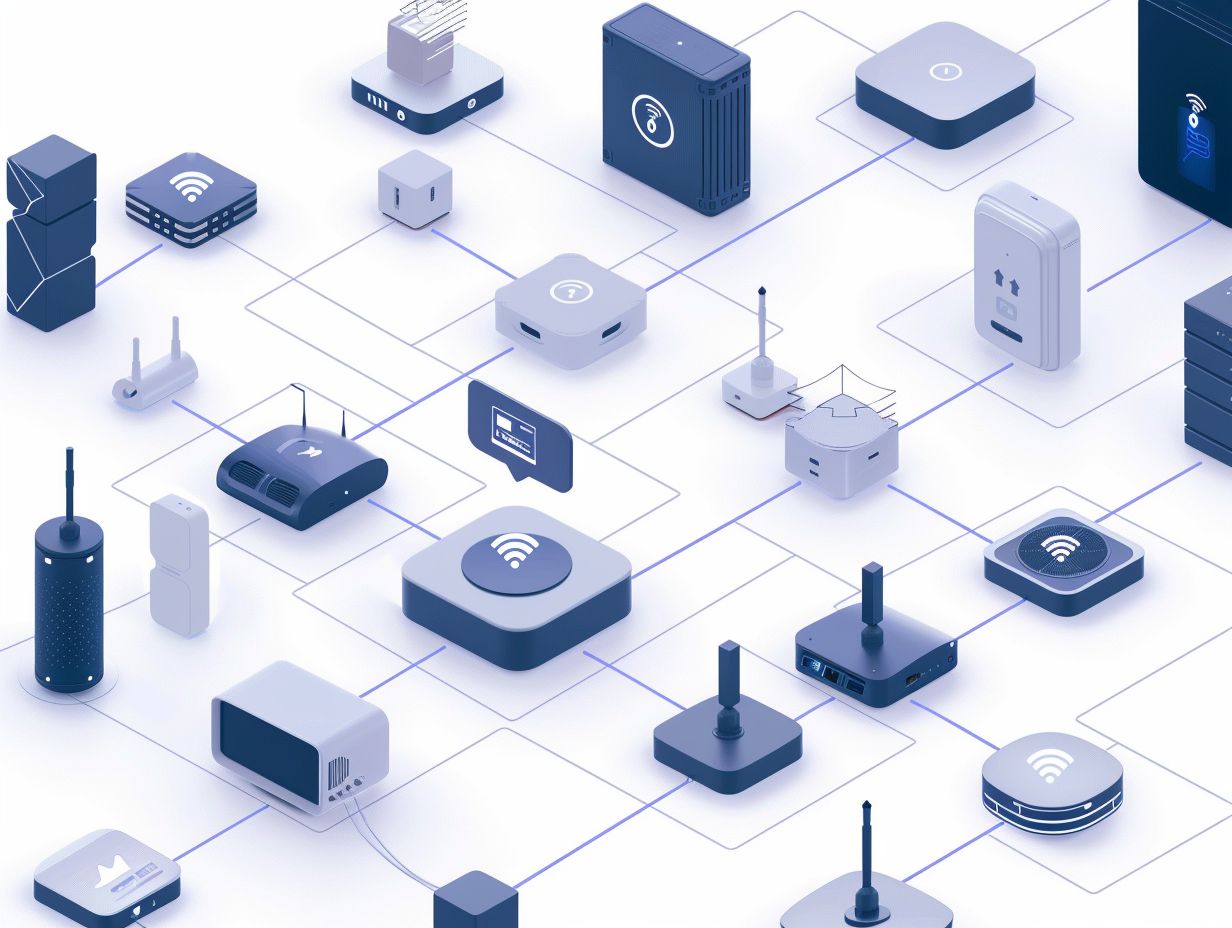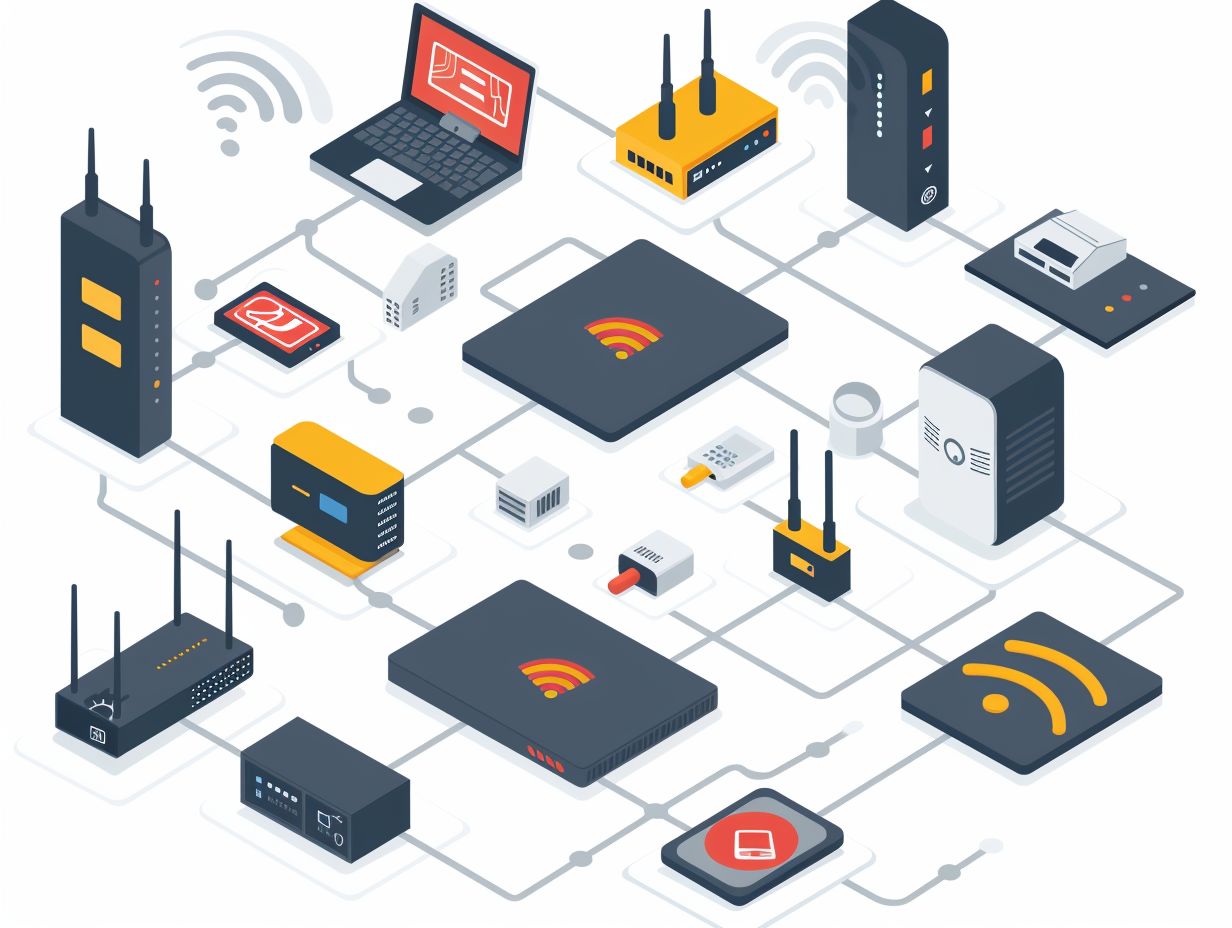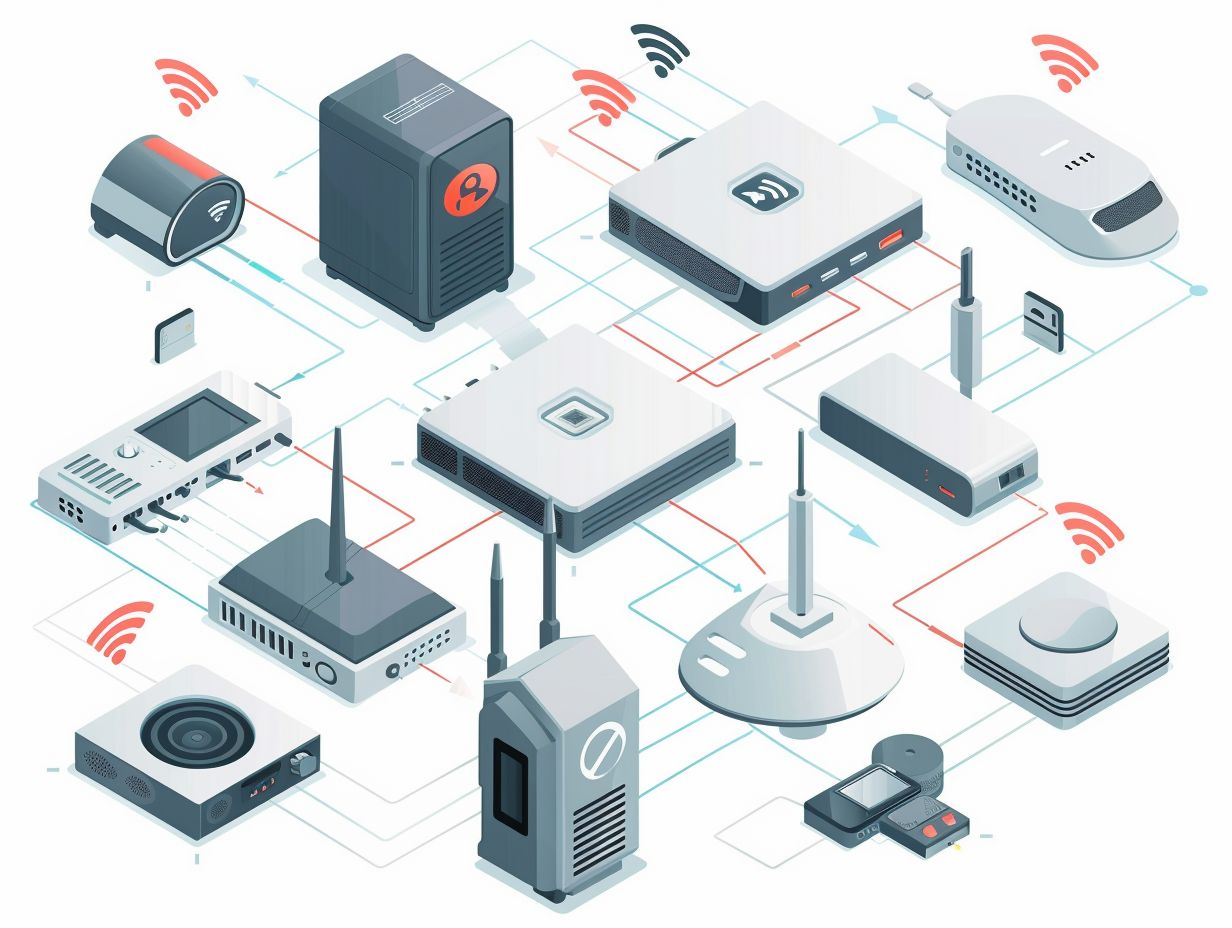Cisco routers play a crucial role in modern network infrastructure, but they are also vulnerable to various security threats. In this discussion, you will explore the importance of securing Cisco routers, common security threats to their infrastructure, and best practices for enhancing their security.
By implementing measures such as strong passwords, access controls, firewalls, and intrusion detection systems, you will learn the essential steps to safeguard your Cisco routers. This knowledge will enable you to protect your network from potential vulnerabilities and ensure a safe and secure environment for your data.
Key Takeaways:

Overview of Cisco Routers and Their Importance
Cisco routers are essential components in network management and play a crucial role in ensuring seamless connectivity and efficient data transfer within networks. These devices, which are powered by Cisco’s proprietary IOS (Internetwork Operating System), serve as the foundation of modern network infrastructures, enabling secure communication and effective data routing.
Cisco routers are recognized for their advanced features, such as Quality of Service (QoS) capabilities, which prioritize critical data traffic for optimal performance. They also provide a wide range of security functionalities, including firewalls, VPN support, and access control lists, to protect networks against cyber threats. Cisco routers support various routing protocols like OSPF and BGP, allowing for efficient packet forwarding and dynamic routing decisions in complex network environments. The reliability and flexibility of Cisco routers establish them as essential tools for managing diverse network configurations and ensuring uninterrupted data transmission.
Common Security Threats to Cisco Routing Infrastructure
The security of your Cisco routing infrastructure is constantly at risk from various cyber attacks that aim to compromise network integrity, intercept traffic, or breach data encryption protocols. Understanding these common security threats is crucial for preserving the confidentiality and integrity of your network communications.
Among the security threats that may target your Cisco routing infrastructure, Distributed Denial of Service (DDoS) attacks present a significant danger. These attacks flood the network with excessive traffic, leading to disruptions in service availability.
Another potential threat is man-in-the-middle attacks, where a malicious actor intercepts communication between two parties, potentially obtaining sensitive information.
Additionally, protocol vulnerabilities in routing devices can be exploited by attackers to gain unauthorized access or manipulate network traffic. This underscores the importance of implementing robust encryption measures to secure data transmission effectively.
Identifying and Understanding Potential Vulnerabilities
To identify and understand potential vulnerabilities in Cisco routers, you must analyze control plane and data plane configurations to ensure secure access and effective traffic management. By examining the switch settings and data plane controls, network administrators can enhance the overall security posture of the routing infrastructure.
This process of identifying vulnerabilities also involves configuration management, focusing on access controls and data plane security mechanisms. Effective configuration management ensures that only authorized entities have access to critical network resources.
Implementation of robust access controls is crucial for preventing unauthorized access and protecting against potential security breaches. A focus on data plane security mechanisms ensures that packets are handled, forwarded, and managed correctly to mitigate network vulnerabilities.
A comprehensive approach to network controls and data plane operations is imperative for maintaining a secure Cisco router environment.
Best Practices for Securing Cisco Routers

Implementing best practices for securing your Cisco routers is crucial in safeguarding your network assets from potential security breaches and attacks. By adopting robust security configurations, restricting unauthorized access, and leveraging advanced security features, you can fortify your network infrastructure against evolving cyber threats.
Access control lists (ACLs) play a vital role in controlling traffic flow to and from your Cisco routers, enabling you to specify which packets are permitted or denied based on specified conditions. Effectively implementing ACLs can help prevent unauthorized access and protect sensitive data.
Encryption protocols such as IPsec or SSL/TLS encryption can secure data transmission over your network, ensuring confidentiality and integrity. Regular firmware updates are essential to patch vulnerabilities and maintain the overall security posture of your Cisco routers.
Implementing Strong Passwords and Access Controls
Implementing strong passwords and access controls on Cisco routers is a fundamental step in enhancing network security and preventing unauthorized access to critical network resources. By configuring robust access control policies and password management protocols, you can mitigate the risk of security breaches.
When enforcing strong password policies, it is crucial to create passwords that are complex and challenging for unauthorized users to guess or crack. Utilizing a combination of uppercase and lowercase letters, numbers, and special characters can significantly enhance password strength.
Incorporating role-based access control is essential for limiting user privileges based on their specific roles within the organization. This ensures that individuals only have access to the resources required for their job function, ultimately reducing the overall attack surface.
Adhering to configuration best practices, such as regular password changes and avoiding default passwords, further fortifies the overall security posture of Cisco routers.
Regularly Updating Firmware and Software
Ensuring regular updating of firmware and software on Cisco routers is essential for addressing security vulnerabilities, enhancing performance, and ensuring compatibility with the latest network protocols and technologies. By staying current with updates and patches, organizations can strengthen their router infrastructure against potential cyber threats.
Firmware and software updates are crucial for maintaining the overall health and security of a network. Effective patch management enables the timely installation of security fixes, thus reducing the vulnerability to exploitation by malicious actors. Version upgrades bring forth new features, improvements, and bug fixes that optimize the router’s functionality. Vulnerability remediation through updates helps safeguard sensitive data and prevent unauthorized access. By prioritizing software maintenance and security enhancements, businesses can operate with confidence, knowing that their network is well-protected.
Additional Security Measures for Cisco Routers
For enhanced network security on Cisco routers, it is recommended to implement additional security measures beyond basic practices. Configuring firewalls, enabling encryption protocols, and enhancing access control mechanisms are crucial steps to ensure comprehensive protection of your network.
Advanced security measures such as implementing IPsec encryption are vital in securing data transmission within your network. IPsec encryption adds an extra layer of confidentiality and integrity to communications by encrypting data packets.
Additionally, configuring access control lists (ACLs) provides detailed control over traffic flow, allowing you to permit or deny specific packets based on defined criteria. By deploying intrusion detection systems (IDS), you can improve threat detection capabilities. IDS continuously monitors network traffic for suspicious activities and provides real-time alerts to potential security breaches.
Configuring Firewalls and Intrusion Detection Systems

Configuring firewalls and intrusion detection systems on Cisco routers is essential for detecting and mitigating network threats, thwarting unauthorized access attempts, and filtering out malicious traffic. By clearly defining firewall rules and intrusion detection policies, your organization can proactively fortify its defenses against potential security breaches.
When creating firewall rules, it is imperative to establish specific criteria for allowing or blocking traffic based on protocols, ports, and IP addresses. Vigilant traffic monitoring is crucial for continuously scrutinizing network data to pinpoint any anomalies or suspicious activities. Simultaneously, intrusion detection systems play an active role in maintaining network security by keeping an eye out for known attack signatures and unusual behavioral patterns, triggering alerts that necessitate further investigation. These integrated mechanisms work cohesively to establish a multi-layered defense strategy, ensuring the protection of your network infrastructure and safeguarding sensitive data from cyber threats.
Enabling Secure Remote Access
Enabling secure remote access to Cisco routers is essential for allowing authorized personnel like yourself to manage network devices from remote locations while upholding data security and confidentiality. By configuring secure shell (SSH) protocols and access control policies, your organization can establish a secure remote management framework.
Implementing Virtual Private Networks (VPNs) provides an additional layer of security by encrypting data traffic between remote users and the Cisco routers, thus protecting sensitive information from potential threats. Utilizing strong authentication methods such as multi-factor authentication and digital certificates enhances the overall security posture.
Employing secure access protocols like HTTPS for web-based access further strengthens the protection of data transmissions. Regular security audits and updates ensure that your remote access configurations stay up-to-date and aligned with industry best practices.
Training and Education for Network Administrators
Ensuring network administrators receive comprehensive training and education is crucial for equipping them with the necessary knowledge and skills to effectively manage and secure Cisco routers. Continuous professional development is essential to keep administrators updated on the latest technologies and best practices in network security.
Certification programs such as CompTIA Network+, CCNA, and CISSP offer specialized courses that deepen administrators’ understanding of network infrastructure, protocols, and cybersecurity measures. These certifications serve to validate their expertise and provide a structured pathway for career progression.
Offering continuous learning opportunities through workshops, webinars, and online resources like Cisco Learning Network enables administrators to enhance their proficiency in network administration and maintain competitiveness in the ever-evolving IT landscape.
Importance of Ongoing Training and Certification
The importance of ongoing training and certification for network administrators cannot be overstated in your professional development. Continuous learning is crucial for staying abreast of evolving technologies, security threats, and industry best practices. By pursuing certifications and attending training programs, you can enhance your expertise and make meaningful contributions to network security.
Your journey of continuous learning often includes obtaining prestigious Cisco certifications, such as CCNA, CCNP, or CCIE, which hold high regard in the industry. These certifications validate your specific skills and knowledge in networking, routing, switching, and security, enhancing your competitiveness and reputation within the field.
Enrolling in specialized courses that focus on areas like cloud computing, cybersecurity, or wireless networking can further expand your skill set and ensure you remain updated on the latest trends and technologies. Industry-recognized qualifications not only open up new career opportunities but also showcase your dedication to excellence and proficiency in network administration.
Frequently Asked Questions

What is Cisco Routing Infrastructure?
Cisco Routing Infrastructure refers to the hardware and software components used to route data packets between different networks, allowing devices to communicate with each other and access the internet.
Why is securing Cisco Routing Infrastructure important?
Securing Cisco Routing Infrastructure is important to prevent unauthorized access to sensitive data and protect the network from malicious attacks, ensuring the overall security and reliability of the network.
What are some common security threats to Cisco Routing Infrastructure?
Some common security threats to Cisco Routing Infrastructure include denial of service attacks, malware and viruses, network intrusion attempts, and unauthorized access to sensitive data.
How can I secure my Cisco Routing Infrastructure?
You can secure your Cisco Routing Infrastructure by implementing strong password policies, regularly updating and patching software, configuring access control lists, and using network security tools such as firewalls and intrusion detection systems.
What are some best practices for securing Cisco Routing Infrastructure?
Some best practices for securing Cisco Routing Infrastructure include regularly auditing and monitoring network activity, implementing role-based access control, disabling unnecessary services, and training employees on cyber security awareness.
Can I secure my Cisco Routing Infrastructure on my own?
While it is possible to secure your Cisco Routing Infrastructure on your own, it is recommended to seek professional assistance from a certified network security expert to ensure that all vulnerabilities are properly addressed and the network is adequately protected.
